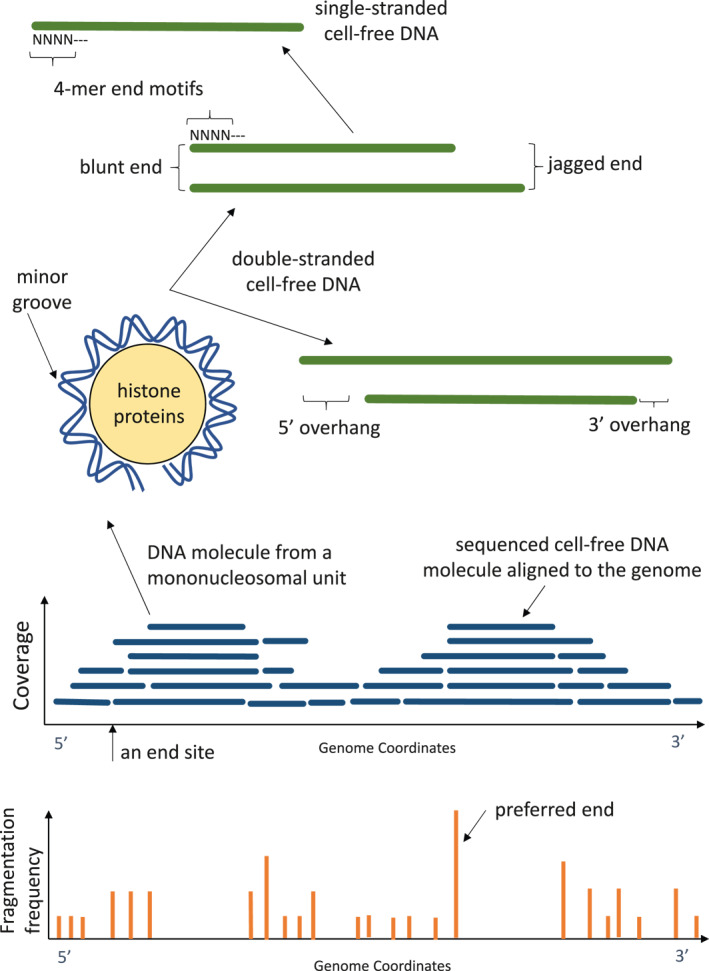FIGURE 1.

Pictorial glossary. Illustrations to depict some of the terms referred to in the text. Cell‐free DNA molecules mostly circulate as short double‐stranded fragments with end termini that are blunt or jagged in nature. A blunt end is when both strands of a double‐stranded DNA molecule end at the same genomic location. A jagged end is present when each strand of a double‐stranded DNA molecule ended at different genomic locations. If the 5′ end of one strand protrudes more, the end is said to show a 5′ overhang. If a 3′ end of one strand protrudes more, the end is said to show a 3′ overhang. A small proportion of cell‐free DNA molecules are single‐stranded. The ends of cell‐free DNA molecules, whether double‐ or single‐stranded, show characteristic sequences, termed motifs. For example, a 4‐nucleotide motif is termed a 4‐mer end motif. Double‐stranded cell‐free DNA molecules usually circulate in a form where they are wound around histone proteins in the form of a nucleosome subunit. When the double‐helical structure of DNA is wound around histones, it exposes the minor grooves of the 3‐dimensional structure at the external surface of the nucleosome which are susceptible to nuclease digestion. When many cell‐free DNA molecules are aligned to the genome coordinates, it is noted that more molecules cover certain regions than others. This periodic coverage pattern is reflective of where protein‐binding, e.g. histones and transcription factors, is present in the cellular DNA and hence are sites protected from nuclease enzymes during the production of cell‐free DNA. One could also determine the genomic locations of cell‐free DNA ending sites which occur more frequently at certain locations than others. Sites with high ending frequencies are termed preferred ends
